Outsourcing content creation has emerged as a strategic choice for businesses seeking to maintain an active online presence.
Whether you’re collaborating with outsourced writers or relying on your in-house team, understanding the steps involved and harnessing the right tools is important.
Outsourcing content creation allows companies to access a lot of talent and expertise, making it a popular choice.
Freelance writers, in particular, offer flexibility and useful specialized skills. However, navigating this terrain requires a structured approach.
In this article, we will provide a guide to step-by-step content creation and a list of tools that can help in the process.
From defining your content needs to collaborating effectively and choosing the right content management system, we’ve got you covered.
Table of Contents
Steps to Outsource Content and Work with Freelance Writers
Outsourcing content creation can be a powerful strategy for businesses looking to maintain a consistent and high-quality online presence.
In this section, we’ll explore how you can outsource content the right way.
Step 1: Defining Your Content Creation Strategy
Before getting into outsourcing, it’s essential to lay the foundation with a well thought-out content creation strategy.
This step involves several key components:
Identifying Your Content Strategy Goals
Begin by clarifying the goals and objectives you intend to achieve through your content.
Do you want more people to know about your brand, more traffic, or to be seen as a leader in your field?
Defining your goals will shape your content’s purpose and direction.
Understanding Your Target Audience
To create content that is helpful, you need to have a good understanding of your potential customers.
Analyze their demographics, preferences, pain points, and interests.
This insight will guide your content choices and help you tailor your messaging effectively.

Establishing Content Guidelines and Voice
Consistency is important in content creation.
Define clear content guidelines, including style, tone, and branding elements.
Ensuring that all content aligns with your brand’s voice maintains a cohesive and recognizable image.
Below is an example of a content guideline that we share with our writing team in every content brief.
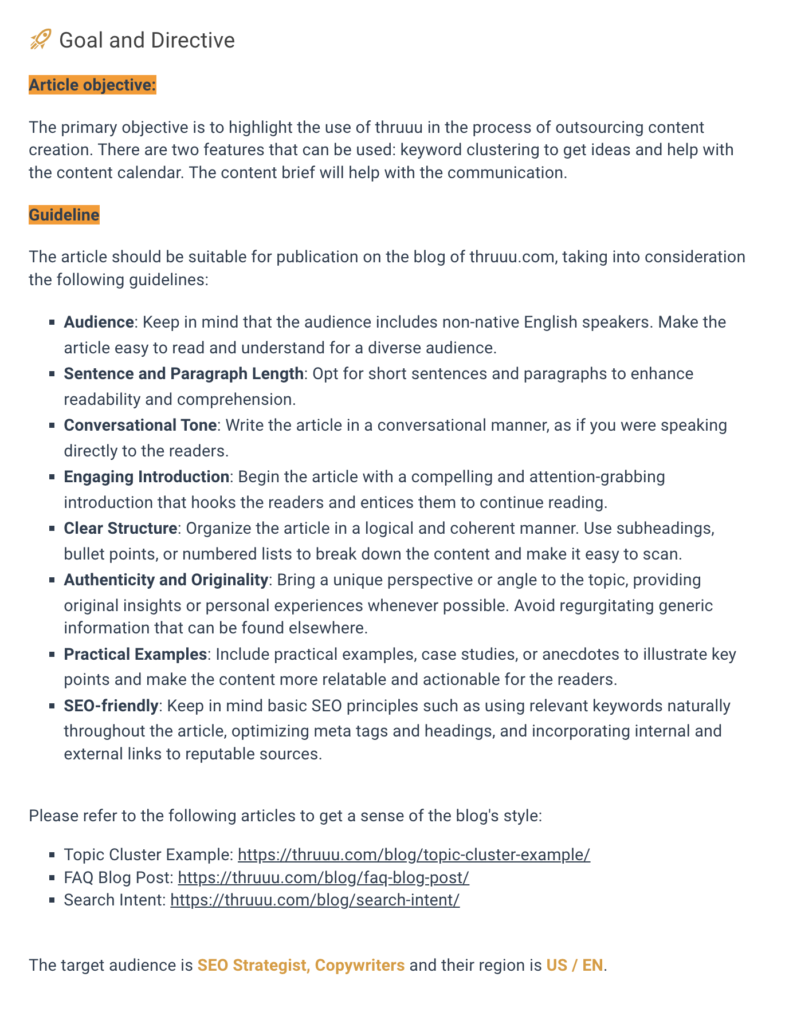
Define Your Budget
Determine the budget you can allocate for outsourcing content creation.
This budget will influence your choice of writers, tools, and resources.
Be realistic about what you can afford while looking for quality.
Step 2: Finding Qualified Writers
To successfully outsource content creation, the next step involves finding qualified writers who can help with your content strategy.
Here are the key avenues to explore:
Freelance Platforms for Outsourcing Content Creation
Online platforms like Upwork, Freelancer, and Fiverr offer access to a vast pool of freelance writers.
You can browse through profiles, review ratings, and collaborate with writers whose expertise matches your needs.
They help provide a good way to connect with talented individuals from anywhere in the world.

Content Creation Agencies and Services
Consider partnering with content creation agencies or services.
They often have a roster of experienced writers and can handle the entire content production process.
This option provides a more hands-off approach, allowing you to focus on your core business activities while professionals manage your content.
Networking and Referrals
Leverage your professional network and seek referrals from colleagues, industry peers, or fellow business owners.
Personal recommendations can lead you to writers with proven track records and a deep understanding of your niche.
Step 3: Testing and Evaluating Outsourced Writers
Once you’ve identified potential writers, it’s important to assess them for your content needs. Here’s how to go about it:
Outlining a Test Project
Start with a small test project to gauge a writer’s capabilities.
This could be as an article, blog post, or other content helpful to your business. Use this opportunity to assess their adherence to guidelines, research skills, and ability to meet deadlines.
Brian Dean, the founder of Backlinko, shares some great advice about hiring and testing writers in the video below:
- Use the same brief for each writer so that you can evaluate them on the same piece.
- Don’t ask for a full article; just the first two or three sections are enough.
Brian takes an interesting approach to shortlisting writers: he asks a question from the job description and expects the writer to answer it first.
Using this approach, you can filter out writers who did not read the job description and simply copied and pasted their resumes.
Evaluating the Quality and Results
Assess the quality of the test project. Does it align with your brand’s voice and objectives?
Review the content for accuracy, coherence, and engagement. The results will give you insights into the writer’s potential to meet your long-term content needs.
Evaluate the writer’s writing skills, including grammar, spelling, and overall writing proficiency.
Ensure they possess the necessary expertise to create content relevant to your field.
Reviewing Portfolio and Samples
Examine the writer’s portfolio and samples of their previous work.
Look for pieces that demonstrate expertise in your industry or niche.
Pay attention to their writing style.
Checking for Professionalism and Reliability
Gauge the writer’s professional sense and reliability.
Are they responsive to communication?
Do they meet deadlines consistently?
A reliable writer is crucial for maintaining a smooth content production process.
You can already assess this during the test. It is not a good sign if a writer takes too long to respond and does not show any signs of life for several days.

Step 4: Defining Your Editorial Calendar and Content Workflow
To maintain a smooth and organized content outsourcing process, it’s vital to establish a clear editorial calendar and content workflow.
Here’s how to do this effectively:
Define a List of Articles
Compile a list of articles or topics you plan to cover.
You don’t have to go over every single brief at this point, but you should have a backlog of ideas for new articles.
Keep in mind that once your writers are ready, they can start producing several articles per week, so you must be prepared and not run out of ideas.

Implementing an Editorial Calendar
Once you have a list of ideas, you can create an editorial calendar outlining when each piece of content should be produced and published.
This schedule helps you maintain consistency and ensures that content aligns with your broader marketing objectives.
Define the Steps of Your Content Workflow
Outline the specific steps involved in your content creation process.
From research and drafting to editing and publishing, a well-defined workflow ensures that everyone involved understands their roles and responsibilities.
At thruuu, our workflow consists of these steps:
- Idea Generation: We list all content ideas.
- Validation: Ideas that are validated are scheduled for publication.
- Content Brief Preparation: Research is in progress, and a content brief is prepared.
- Writing: A writer is assigned to create the content.
- Reviewing: The piece of content is reviewed by the editor-in-chief, and a feedback loop is initiated with the writer to improve the copy.
- Editing: The content is created in WordPress.
- Graphic Design: Graphics for the article are produced.
- Ready for Publishing: The article is in its final state, and fine-tuning and metadata are checked.
- Published: The article is published.
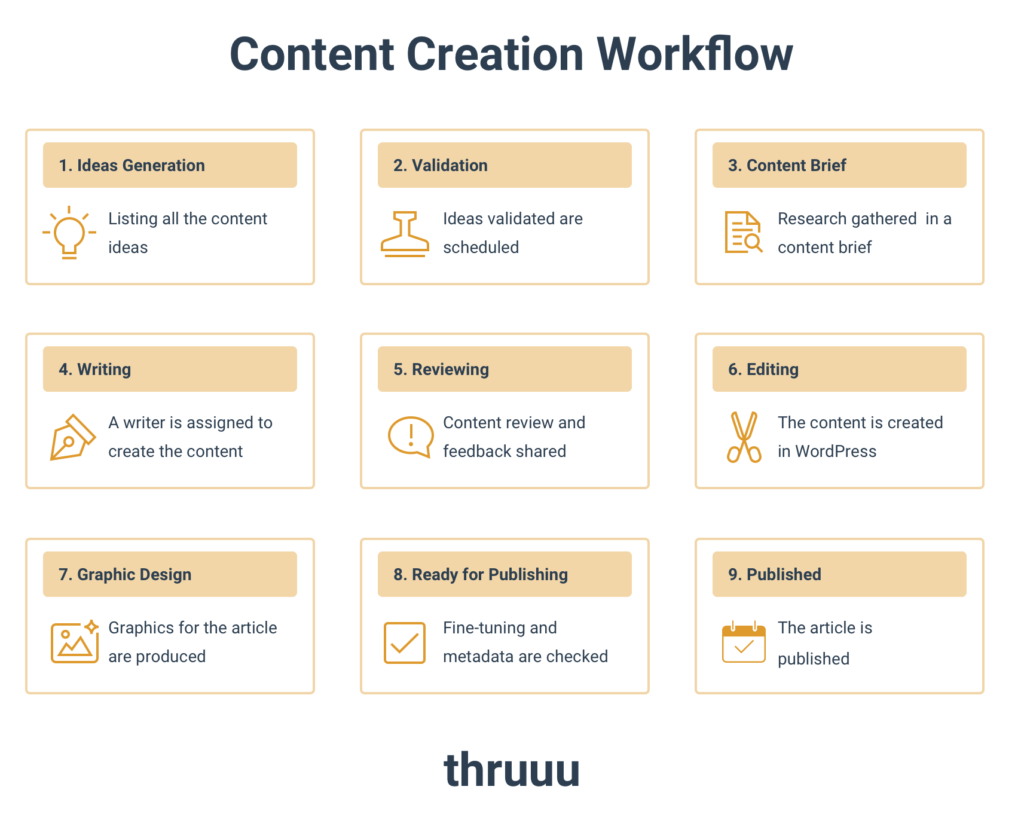
By establishing a well-structured calendar and content workflow, you create a framework that keeps your content production on track, enabling a good relationship with your outsourced writers.
This step is important in maintaining consistency and quality across your content portfolio.
Step 5: Developing Content Brief Templates
We mentioned earlier that a key step of our content creation process is to prepare detailed content briefs that are shared with writers.
We recommend crafting a standard content brief template that outlines essential information for each project.
It could include details such as:
- Target audience
- Keywords
- Content goals
- Style preferences
- Title of the article
- Content outline
- And any specific formatting requirements.
A well-structured content brief template serves as a valuable communication tool between you and your writers.
It ensures that all necessary information is provided upfront, reducing the need for repeated clarification.
This streamlined approach not only saves time but also enhances the consistency and quality of the content produced by your outsourced writers.
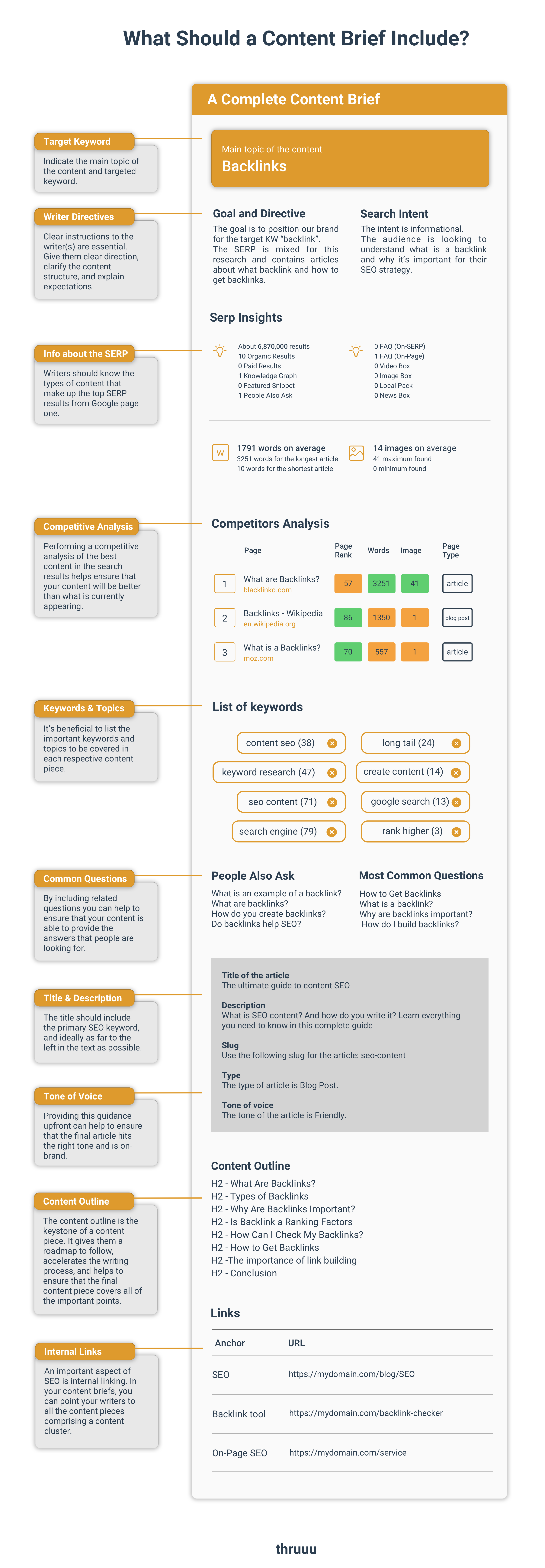
What Should a Content Brief Include?
Learn what content briefs are, why they’re so important, and how to create effective briefs that lead to higher-performing better content.
Step 6: Improving Collaboration with Outsourced Writers
Successful collaboration with outsourced writers hinges on effective communication and relationship building.
Here’s how to enhance your partnership:
Establish Effective Communication Channels
Choose reliable communication channels that suit both you and your writers.
This could be email, project management tools, or regular meetings.
Consistent and clear communication is essential for aligning expectations.
Provide Ongoing Feedback and Guidance
Offer constructive feedback on completed work, highlighting what is right and areas for improvement.
Regularly guide your writers to ensure their content aligns with your brand’s voice and goals.

Nurture a Relationship for Long-Term Success
Building a strong rapport with your writers can lead to long-term success.
Treat them as valuable team members, acknowledge their contributions, and maintain professionalism in all interactions.
Let Your Writers Get to Know Your Business
Share insights about your business, industry, and target audience with your writers.
The more they understand your company, the better they can create helpful content.
Step 7: Measuring and Analyzing Content Performance
Evaluating the effectiveness of your outsourced content is vital for ongoing improvement.
Here’s how to measure and analyze content performance:
Setting Clear Performance Metrics:
Define specific key performance indicators (KPIs) that align with your content goals.
These could include metrics like website traffic, engagement rates, or conversion rates.
Tracking Engagement and Conversion Rates:
Use analytics tools such as Google Analytics to monitor how your audience engages with your content and whether it leads to desired actions, such as signing up for newsletters or making purchases.
If you want to understand how to set up and track GA4 conversion, we recommend reading this article or watch the video below.
Adjusting and Improving Content Strategy Based on Data
Regularly review the data and insights gathered from content performance.
Use this information to refine your content strategy, focusing on what works and making necessary adjustments for better results.
If you discover that a specific content format or category performs better, increase your focus on it.
You may also notice that some writers are more efficient with a particular topic or format of content over time. Assign them content where they excel.
By following these steps, you can enhance collaboration with your outsourced writers and ensure that your content strategy remains effective and adaptable based on performance data.
Essential Tools for Outsourcing Content Creation
To excel in outsourcing content creation, you’ll need the right tools at your disposal. Here’s a list of tools that can simplify the process:
Upwork (for Freelance Writers)

Upwork is a versatile platform that facilitates easy collaboration with freelance writers.
You can browse profiles, review writers’ portfolios, and select individuals who have skills that you need.
The platform also offers project management features, secure payment options, and a transparent work history, making it a valuable resource for efficient content outsourcing.
thruuu Keyword Clustering and Topic Cluster Tool (for Content Ideas)
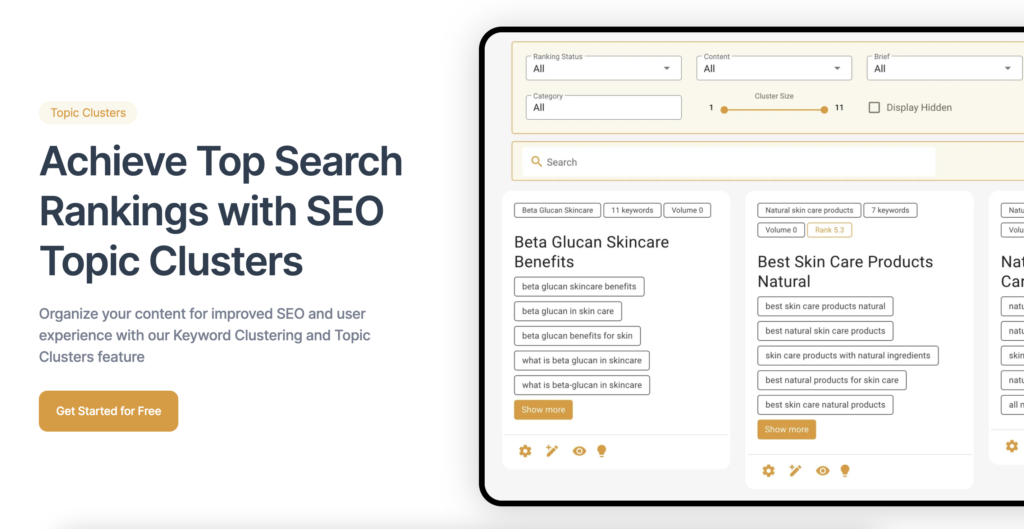
When it comes to generating content ideas for your outsourcing efforts, the thruuu keyword clustering and topic cluster tool can be a game-changer.
thruuu helps you uncover content opportunities by clustering related keywords and topics.
This tool streamlines your research process, providing insights into what your target audience is searching for online.
- Keyword Clustering: thruuu groups similar keywords together, revealing patterns and trends in search queries. This aids in identifying overarching themes and content clusters.
- Topic Clusters: By organizing content around central topics, you can create a web of interconnected articles. This not only boosts SEO but also enhances the user’s experience by offering comprehensive information.
- Content Strategy: thruuu empowers you to develop a well-structured content strategy based on data-driven insights, ensuring that your outsourced content aligns with what your audience is actively seeking.
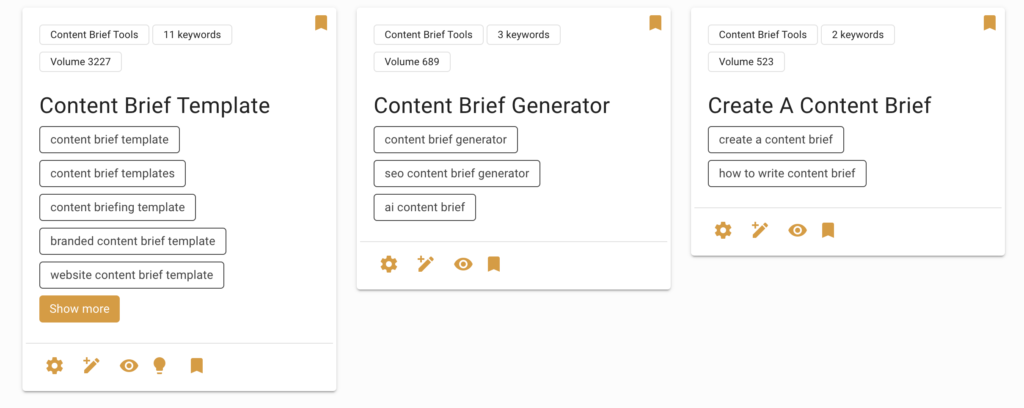
Incorporating thruuu into your content creation toolkit can fuel your outsourcing efforts with fresh, relevant ideas that resonate with your audience.
Trello (for Managing Editorial Calendar and Workflow)

Trello is a user-friendly project management tool that simplifies the management of your editorial calendar and content workflow.
Trello’s intuitive boards, lists, and cards allow you to organize tasks, set deadlines, and track progress effortlessly.
Create boards for content planning, assign tasks to writers, and maintain a visual overview of your content pipeline.
This streamlining ensures efficient collaboration and content delivery in your outsourcing journey.
thruuu Content Brief Generator (for Creating and Sharing Content Briefs)
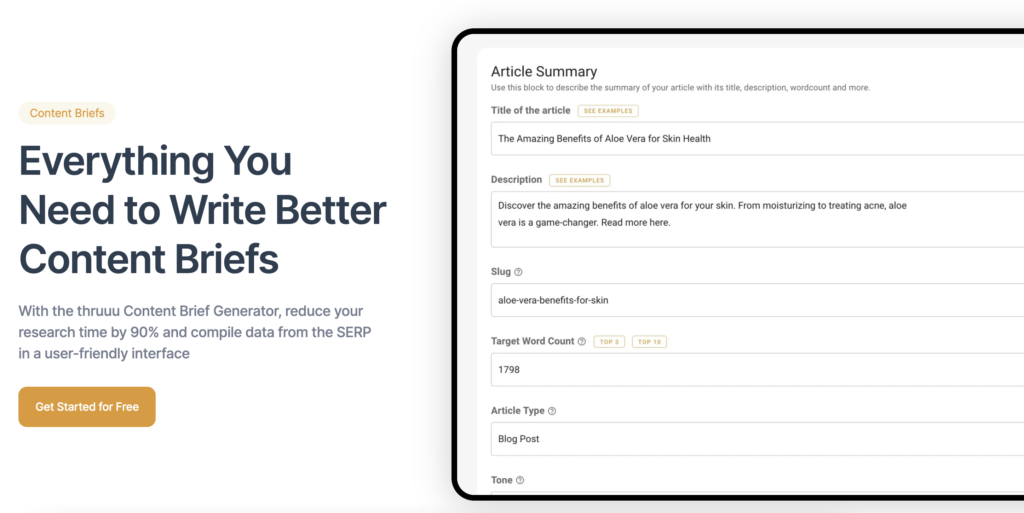
The thruuu Content Brief Generator is a handy tool for effectively sharing content briefs with your outsourced writers.
thruuu simplifies the process of creating and disseminating content briefs. It helps you craft detailed briefs with clear instructions, target keywords, and content objectives.
Once generated, you can easily share these briefs with your writers, ensuring that they have all the necessary information to produce high-quality content.
This tool streamlines communication, reduces misunderstandings, and empowers your outsourced writers to create content that aligns precisely with your expectations and goals.
Below you can see the exact brief used to create this article, and here you can open the public version.

Google Drive and Docs (for Sharing Documents and Collaboration)
Google Drive and Docs provide a seamless way to share documents and collaborate with your outsourced writers.
Google Docs allows real-time collaboration on content. Multiple users can edit and comment simultaneously, ensuring efficient communication between you and your writers.
Google Drive ensures easy document storage and sharing. It simplifies version control, making it a valuable asset for streamlined content collaboration in your outsourcing process.
Grammarly (for Reviewing Content)

Grammarly is a valuable tool for reviewing and enhancing the quality of your outsourced content.
Grammarly helps writers catch spelling, grammar, and punctuation errors, ensuring content is error-free.
It also provides style suggestions to enhance readability and coherence.
This tool streamlines the editing process, ensuring that the content you receive from outsourced writers meets your high standards for quality and professionalism.
AI Detector Tools (for Validation Against AI)
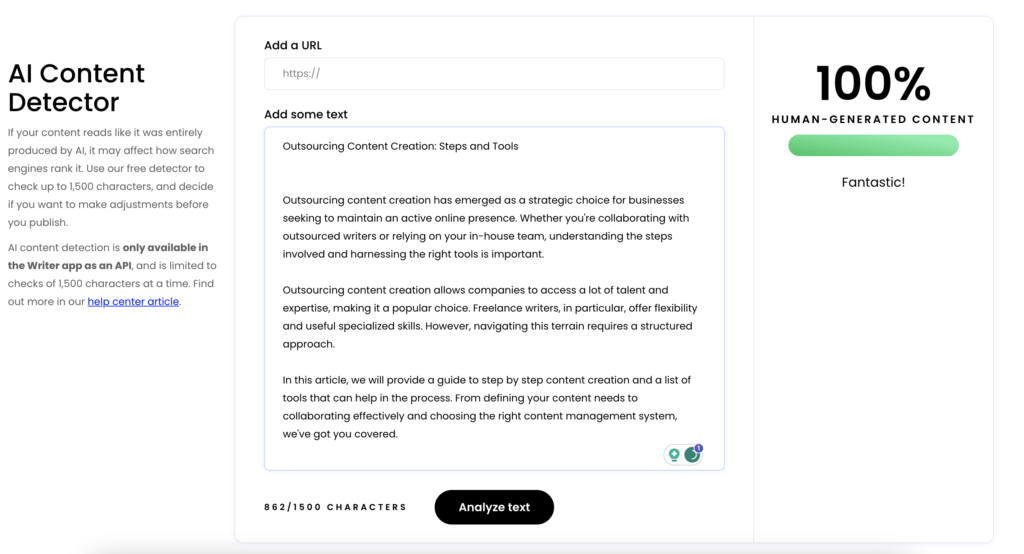
AI detector tools are essential for validating content against potential AI-generated or plagiarized elements.
These tools analyze content to detect any signs of AI-generated text or plagiarism, ensuring the originality and authenticity of your outsourced content.
However, these tools don’t work 100%. It could happen that they detect AI content even if the content is written by a human and vice versa.
Our recommendation is to test your content against several tools.
Here is a list of AI detector tools:
- https://writer.com/ai-content-detector/
- https://copyleaks.com/ai-content-detector
- https://crossplag.com/ai-content-detector/
- https://contentdetector.ai/
- https://www.zerogpt.co
By using AI detectors, you can maintain the integrity of your content and confidently deliver valuable, unique material to your audience, enhancing the trustworthiness of your outsourcing efforts.
Loom (for Sharing Feedback)
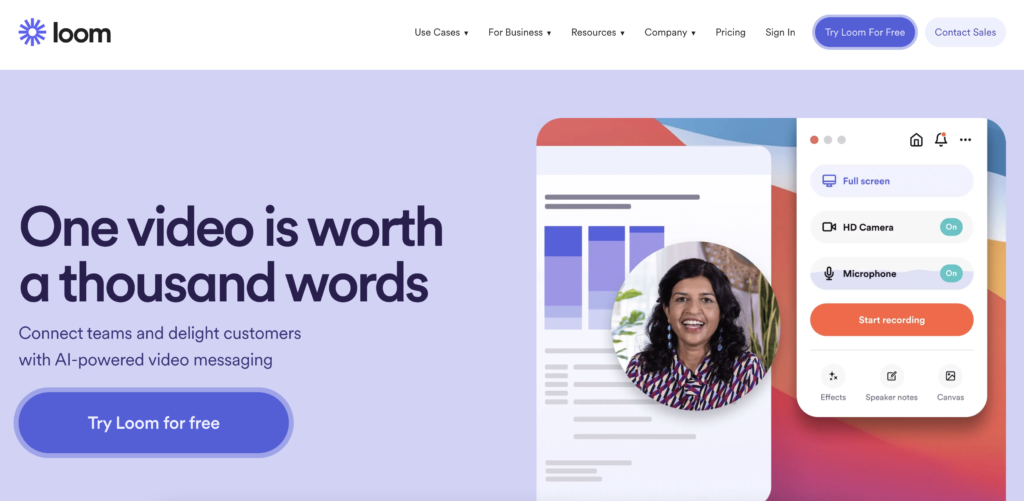
Loom is an efficient tool for providing feedback to your outsourced writers.
Loom allows you to create video messages that convey feedback and instructions more effectively than written text alone.
You can easily record your comments and suggestions, providing a personalized touch to your communication.
This tool streamlines the feedback process, ensuring that your writers receive clear and straight input, ultimately leading to improved content outcomes in your outsourcing collaboration.
Conclusion
Outsourcing has become an important part of many businesses’ strategies.
To outsource content successfully, creating an effective strategy is necessary.
This involves proper planning, from defining content needs and selecting the right writers to use essential tools.
Moreover, building a successful partnership with your outsourced writers is an important part of content outsourcing.
By carefully considering the pros and cons, and getting strong partnerships, you can use content outsourcing to reach and engage your target audience effectively.
Empower Your Content Team
Our end-to-end content optimization solution empowers your team to crack the Google algorithm, craft exceptional content, and achieve remarkable organic search results. Don’t miss this opportunity.
